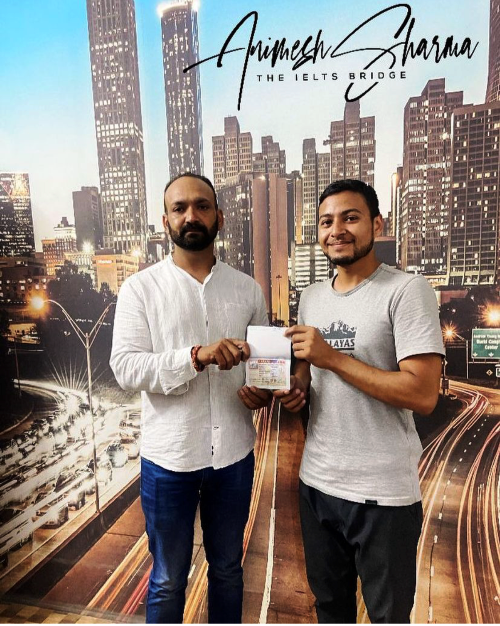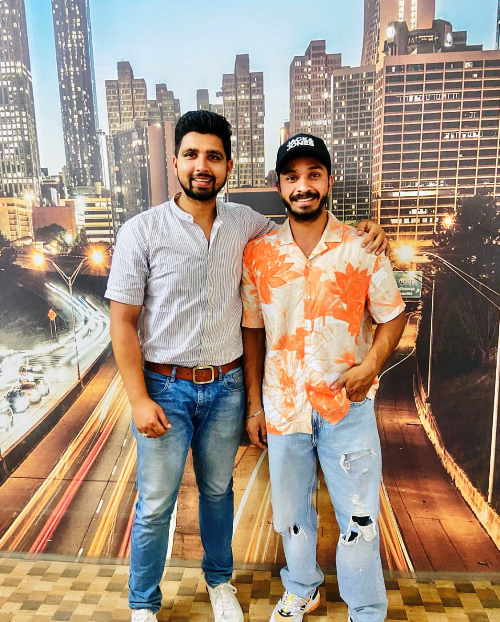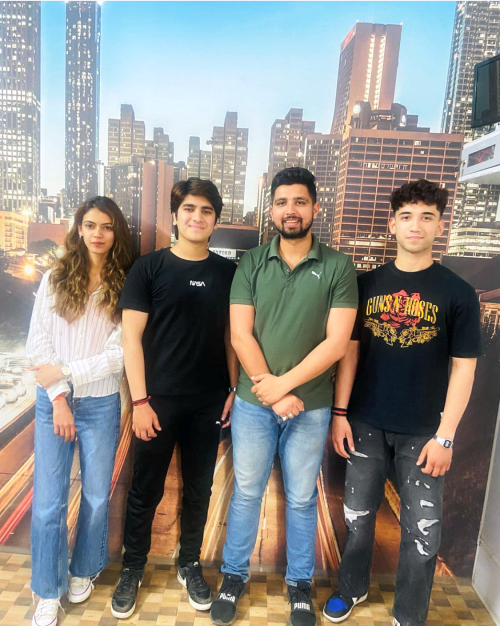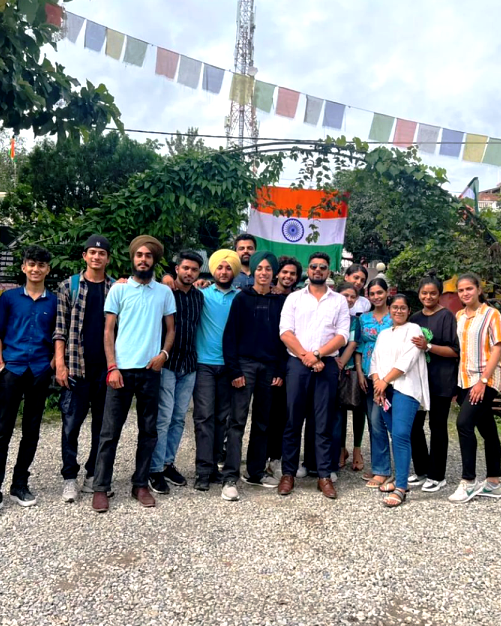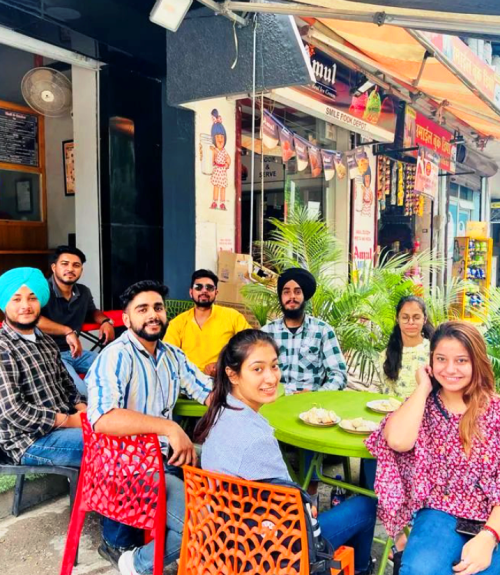Section 1: Visitor attractions in southern England
Questions 1-7: Identifying information
[This question asks you to find information from the passage and write the number of the paragraph (A, B, C or D … .. ) in the answer sheet. Now, if the question is given in the very first part of the question set, I’d request you not to answer them. It’s mainly because this question will not follow any sequence, and so it will surely kill your time. Rather, you should answer all the other questions first. And just like List of Headings, only read the first two lines or last two lines of the expected paragraph initially. If you find the answers, you need not read the middle part. If you don’t find answers yet, you can skim the middle part of the paragraph. Keywords will be a useful matter here.]
Question no. 1: Visitors can look at animals from another part of the world.
Keywords for the question: look, animals, another part of the world,
The answer can be found in the description of Attraction site E (Canford Wildlife Centre). The writer says here in line no. 2, “. . . Here visitors can observe many species from the tropical island of Madagascar . .. . .”
Here, observe = look at, species = animals, the tropical island of Madagascar = another part of the world,
So, the answer is: E
Question no. 2: People can hold a business conference in this place.
Keywords for the question: hold, business conference,
The answer can be found in the description of Attraction site B (Withney Wetland Centre). The author says in the last line, “ .. . The visitors’ centre may also be hired for private or corporate events.”
Here, corporate events = business conference,
So, the answer is: B
Question no. 3: Visitors can find out what toys were used in the last century.
Keywords for the question: find out, toys, used, last century,
The answer can be found in the description of Attraction site F (Oakwell Museum). The writer says in the last line, “ . .. . a hundred years ago. They can also enjoy the popular games and wooden animals of that period.”
Here, popular games and wooden animals = toys, a hundred years ago . . .. .. that period = last century,
So, the answer is: F
Question no. 4: Activities are available all year round here.
Keywords for the question: Activities, available, all year round,
The answer can be found in the description of Attraction site B (Withney Wetland Centre). The author says in the beginning, “Visitors will enjoy a visit to Withney whatever the season. .. .”
Here, whatever the season = all year round,
So, the answer is: B
Question no. 5: You can buy light meals here.
Keywords for the question: buy, light meals,
The answer can be found in the description of Attraction site A (Blackthorn Castle). Take a look at the last sentence, “ .. . . Homemade snacks are on sale.”
Here, snacks = light meals, on sale = buy,
So, the answer is: A
Question no. 6: Visitors can see how food was prepared in the past.
Keywords for the question: see, how food was prepared, the past,
The answer can be found in the description of Attraction site C (Headley Hall). The author writes in lines 3-4, “. … and visit the huge kitchen complete with period equipment – demonstrations are given at weekends.”
Here, visit the huge kitchen = visitors can see how food was prepared,
So, the answer is: C
Question no. 7: You can visit modern imitations of old buildings here.
Keywords for the question: visit, modern imitations, old buildings,
The answer can be found in the description of Attraction site A (Blackthorn Castle). The writer says in the first lines, “This famous, historically accurate, reconstructed castle and village enables visitors to travel back in time.”
Here, reconstructed castle = modern imitations of old buildings,
So, the answer is: A
Paragliding in Australia
Questions 8-14: TRUE, FALSE, NOT GIVEN
[In this type of question, candidates are asked to find out whether:
The statement in the question agrees with the information in the passage – TRUE
The statement in the question contradicts the information in the passage – FALSE
If there is no information on this – NOT GIVEN
For this type of question, you can divide each statement into three independent pieces and make your way through with the answer.]
Question no. 8: A paraglider is more comfortable than a parachute.
Keywords for the question: paraglider, more comfortable, parachute,
The answer can be found in the last sentence of the ‘What is paragliding?’ section. The writer says here, “ . … and they report that it outperforms a parachute in terms of comfort.”
Here, outperforms a parachute in terms of comfort = more comfortable than a parachute,
So, the answer is: TRUE
Question no. 9: Most paragliding schools are situated by the sea.
Keywords for the question: most paragliding schools, situated, by the sea,
The answer to this question is found in the first line of the ‘Where do I learn?’ section. The writer says, ‘There are lots of schools, mainly based inland by appropriate hills or mountains, . ..”
Here, mainly based inland = most paragliding schools are situated near the hills or mountains.
So, the answer is: FALSE
Question no. 10: Learners must pass a theory test in order to get their licence.
Keywords for the question: Learners, must pass, theory test, to get, licence,
There is information about ‘theory sessions’ and ‘licence’ in the ‘Where do I learn?’ section. However, nowhere does it say anything about learner must pass a theory test to get a licence or not.
So, the answer is: NOT GIVEN
Question no. 11: Learners are able to paraglide unaccompanied after a week’s course.
Keywords for the question: learners, able to paraglide, unaccompanied, after, a week’s course,
Take a look at the last lines in the ‘Where do I learn?’ section, “. . .. It takes about seven days to get your basic licence; then you’re free to fly independently at sites across Australia.”
Here, about seven days = a week’s course, fly independently = paraglide unaccompanied,
So, the answer is: TRUE
Question no. 12: It is advisable to purchase some equipment before you do training.
Keywords for the question: advisable, purchase, some equipment, before, do training,
The answer can be found in the last lines in the ‘What do I need’ section where the writer advises the readers not to purchase equipments before the course. The writer says, “However, you’ll probably want to buy your own more sophisticated equipment, which you’ll be able to choose much better once you’ve tried some out on your course.”
Here, once you’ve tried some out on your course = you should try equipment on your course first, and then you should think about buying your own equipment.
So, the answer is: FALSE
Question no. 13: Fit people of any age can take up paragliding.
Keywords for the question: fit people, any age, can, take up, paragliding,
The answer can be found in the ‘Who can do it?’ section. The author says here in the beginning, “There’s no upper age limit provided your instructor deems you capable, but the youngest anybody can paraglide is 14.”
Here, the youngest anybody can paraglide is 14 = nobody under 14 can paraglide,
So, the answer is: FALSE
Question no. 14: The preliminary uphill walk may strain some of your muscles.
Keywords for the question: preliminary uphill walk, may strain, some, muscles,
The answer can be found in the ‘Who can do it?’ section in lines 4-6, “ .. . .You’ll probably experience pain in some muscles you didn’t know you had whilst learning, but many of those will be due to the walk up the training hill to launch.”
Here, experience pain in some muscles = strain some of your muscles, due to the walk up the training hill to launch = due to the preliminary uphill walk,
So, the answer is: TRUE
Section 2: How to prepare for an interview
Questions 15-21: Completing sentences with ONE WORD ONLY
In this type of question, candidates are asked to write one word only to complete sentences on the given topic. For this type of question, first, skim the passage to find the keywords in the paragraph concerned with the answer, and then scan to find the exact word.
[TIPS: Here scanning technique will come in handy. Target the keywords of the questions to find the answers. Remember to focus on Proper nouns, random Capital letters, numbers, special characters of text etc.]
Question no. 15: By preparing for an interview, you will gain ________ which will help you present yourself well.
Keywords for the question: preparing for, interview, gain, help you, present, yourself, well,
The answer can be found in the ‘Why prepare?’ section. The writer talks about three points here. Take a close look at point no. 2, “If you’re well prepared, you will have more confidence and this will affect the way you come across.”
Here, have = gain, this will affect the way you come across = will help you present yourself well,
So, the answer is: confidence
Question no. 16: Read through any documents you have received about the company and also go to their ________.
Keywords for the question: read through, documents, received, about, company,
The answer can be found in the ‘What to prepare?’ section. The author says in the very beginning,
“Find out about the organisation:
- Visit the website and read any materials that you have been sent. . … . . .”
Here, read = read through, materials that you have been sent = any documents you have received, visit = go to,
So, the answer is: website
Question no. 17: Check the job description to find out what ________ are involved in the post you have applied for.
Keywords for the question: check, job description, find out, involved, post, you, applied for,
Again, in the ‘What to prepare?’ section, go through carefully the following lines,
“Find out about the job:
- Ask for a job description or specification. This will tell you the duties that go with the job.”
Here, ask for = check, go with = involved in,
So, the answer is: duties
Question no. 18: Interviewers may be interested to hear about any unpaid help you have given to a _________.
Keywords for the question: interviewers, may be interested, hear, about, unpaid help, you, given to,
The answer can be found in the ‘What to prepare?’ section. Here, take a close look at the following lines in the point ‘Find out what the employer is looking for:’,
“Add in a few ‘lesson learned’ – what you did and how you might have done it better. You can also outline any voluntary work you have done for a charity, or any experience of paid work in an unrelated sector.”
Here, you can also outline = interviewers may be interested to hear about, voluntary work you have done = unpaid help you have given,
So, the answer is: charity
Question no. 19: Be ready to talk about your ________ for the development of your career.
Keywords for the question: be ready, talk about, development, your career,
In the ‘What to prepare?’ section, take a look at the point named ‘Preparing for other kinds of questions’, “Interviewers are also looking for someone who is likely to stay with the organisation and progress within it. Prepare to answer questions about your ambitions for the future.”
Here, prepare to answer questions = be ready to talk about, progress = development,
So, the answer is: ambitions
Question no. 20: Explain any ________ that there are in your work record and clarify how you used the time to improve your skills.
Keywords for the question: explain, your work record, clarify, how, used, time, improve, skills,
Again, in the ‘What to prepare?’ section, take a look at the point named ‘Preparing for other kinds of questions’ and read these lines, “You may also be asked to account for gaps in your career history, if you have any. Be positive and accentuate the learning or experience you gained during these periods.”
Here, account for = explain, career history = work record, learning or experience you gained during these periods = how you used the time to improve your skills,
So, the answer is: gaps
Question no. 21: Questions about _______ should be delayed until a later stage.
Keywords for the question: questions about, should be delayed, until, later stage,
The answer can be found in the ‘What to prepare?’ section. Here, go to the very end and find the point named ‘Preparing your own questions’ and read carefully, “Don’t ask about salary unless you have been offered the job.”
Here, Don’t ask = questions. . .. should be delayed, unless you have been offered the job = until a later stage,
So, the answer is: salary
Setting up your own business
Questions 22-27: Completing sentences with ONE WORD ONLY:
In this type of question, candidates are asked to write one word only to complete sentences on the given topic. For this type of question, first, skim the passage to find the keywords in the paragraph concerned with the answer, and then scan to find the exact word.
[TIPS: Here scanning technique will come in handy. Target the keywords of the questions to find the answers. Remember to focus on Proper nouns, random Capital letters, numbers, special characters of text etc.]
Question no. 22:
Step 1: Decide who you are going to sell to and compare yourself with the _________ you are going to have.
Keywords for the question: step 1, decide, who, going to sell to, compare yourself, going to have,
The answer can be found in the ‘Know your market’ section. The writer says in the first paragraph, “. .. . . Start by thinking about who your target customers are. Are they people who live locally? Are they a particular group of people?”
Here, Start by thinking about who your target customers are = Decide who you are going to sell,
Then in the second paragraph of the same section the writer says, “Now look at your competitors. What is different about what you will be doing and how will you persuade people to come to you instead of going to someone who is already established?”
The last lines (the italic lines) here suggest that if you want to sell perfectly, you need to compare yourself with your competitors.
So, the answer is: competitors
Question no. 23:
Step 2: Consider how you will market your product and your method of _________.
Keywords for the question: step 2, consider, how, market, product, method of,
In the ‘How will you reach the customers?’ section, the writer asks this question, “Will you promote your products by phoning people, or visiting local traders, or advertising in magazines or online? Will your delivery system be direct or through shops?”
Here, promote your products = market your products, system = method,
So, the answer is: delivery
Question no. 24:
Step 3: Decide if you will have to find _________ to work in, or buy equipment.
Keywords for the question: step 3, decide, if, will have to find, work in, buy equipment,
In the beginning of the ‘How will your business work?’ section the writer says, “Now think about what your business needs to succeed. Do you need to look for premises or can you work from home? Do you need to invest in manufacturing equipment to start with?”
Here, look for = find, invest = buy,
So, the answer is: premises
Question no. 25:
Step 5: Make sure you deal with the accounts and other essentials in accordance with the ________.
Keywords for the question: step 5, make sure, deal with, accounts, other essentials, in accordance with,
Again, at the end of the ‘How will your business work?’ section the writer says, “The law regulates how companies are run and you need to set aside the time to see that this is done properly, in relation to issues like accounting, insurance and tax.”
Here, you need to set aside the time to see = make sure you deal with, issues like accounting, insurance and tax = the accounts and other essentials,
So, the answer is: law
Question no. 26:
Step 6: Calculate all the ________ involved in your business when deciding how much to charge.
Keywords for the question: step 6, calculate, all, involved in, business, when deciding, how much, to charge,
The answer can be found in the ‘The money’ section. The writer says here in the first paragraph, “As you are working out the prices for your products, you need to make sure you build in all your costs.”
Here, working out the prices for your products = deciding how much to charge, build in = calculate,
So, the answer is: costs
Question no. 27:
Step 8: Consider if you require any ________ to start your business, and where to find it.
Keywords for the question: step 8, consider, if, require, any, start, business, where to find it,
The answer can be found in the ‘The money’ section. The writer says here in the second paragraph, “. .. .. . If you think you will need to find some funding to help get the business off the ground, how much will you need and who will you approach to get it?”
Here, If you think you will need to find = consider if you require, to help get the business off the ground = to start your business,
So, the answer is: funding
Section 3: Understanding hares
Questions 28-33: List of headings:
[In this question type, IELTS candidates are provided with a list of headings, usually identified with lower-case Roman numerals (i, ii, iii, etc,). A heading will refer to the main idea of the paragraph or section of the text. Candidates must find out the equivalent heading to the correct paragraphs or sections, which are marked with alphabets A, B, C and so forth. Candidates need to write the appropriate Roman numerals in the boxes on their answer sheets. There will always be two or three more headings than there are paragraphs or sections. So, some of the headings will not be used. It is also likely that some paragraphs or sections may not be included in the task. Generally, the first paragraph is an example paragraph that will be done for the candidates for their understanding of the task.
TIPS: Skimming is the best reading technique. You need not understand every word here. Just try to gather the gist of the sentences. That’s all. Read quickly and don’t stop until you finish each sentence. Most importantly, try to read the first and last few lines.]
Question no. 28: Paragraph A
Just read the last lines of paragraph A, “ . .. . and this could be the key to turning round the current decline in hare populations.”
Here, could be the key to turning round = possible solution, decline = falling, populations = numbers,
So, the answer is: v (A possible solution to falling numbers)
Question no. 29: Paragraph B
If you skim the paragraph, you will find out that the paragraph gives details about brown hares’ physical characteristics. Take a look at some phrases used to describe them, ‘a number of physical adaptations’ (line no. 1), ‘exceptionally large ears’ (line no. 2), ‘large golden eyes’ (line no. 4), ‘greatly enlarged heart’ and ‘higher volume of blood’ (line no. 6).
So, the answer is: ix (Useful physical features)
Question no. 30: Paragraph C
Paragraph C gives details about reproduction of brown hares. We find words and phrases like ‘birth’, ‘breeding’, ‘leverets’ (hare babies), ‘breeding season’, ‘females’, ‘pregnant’, etc.
So, the answer is: iii (Reproductive patterns)
Question no. 31: Paragraph D
Take a close look at lines 2-3, “… .. The reason is that hares have evolved such self-sufficient young. Unlike baby rabbits, leverets are born furry and mobile.” Then read line no. 4, “ .. .. and are immediately left to their own devices by their mothers.”
Here, self-sufficient, mobile, left to their own devices, all indicate to ‘lonely beginning’.
So, the answer is: vii (A rather lonely beginning)
Question no. 32: Paragraph E
First, take a look at the clause in line no. 2, ‘Hares are selective feeders at the best of times:’.
Then look at another clause in line no. 5, ‘This causes them problems . ..’
Here, selective feeders = fussy eater,
So, the answer is: ii (The problem with being a fussy eater)
Question no. 33: Paragraph F
Paragraph F is mainly divided into two parts: survival rates in the past and the present.
First, look at lines 3-5, where the writer gives information about survival of the hare in the past, “ . .. .. They certainly used to: studies show that hares evolved on the open plains and spread rapidly westward from the Black Sea after the last ice age (though they were probably introduced to Britain as a species to be hunted for the pot by the Romans).
Then, take a look at line no. 6 where the writer gives information about present survival, “ . .. But today’s hares are thwarted by the lack of rich farmland habitat.”
So, the answer is: viii (A comparison between past and present survival rates)
Questions 34-36: Multiple choice questions
[This type of question asks you to choose a suitable answer from the options using the knowledge you gained from the passage. Generally, this question is found as the last question so you should not worry much about it. Finding all the answers to previous questions gives you a good idea about the title.]
Question no. 34: According to the writer, what is the ideal habitat for hares?
Keywords for the question: ideal habitat for hares,
In paragraph A the author says in lines 3-4, “ . .. .Wherever they live, hares appear to have a fondness for fields with a variety of vegetation, for example short as well as longer clumps of grasses.”
Here, a variety of vegetation = a range of vegetations,
So, the answer is: C (areas which include a range of vegetations)
Question no. 35: When leverets are living alone they are not visited often by their mother because –
Keywords for the question: when leverets, living alone, not visited, often, their mother, because,
We can find answer to this question in paragraph D in lines 8-9, “. .. . . This lack of family contact may seem harsh to us, but it is a strategy that draws less attention from predators.”
Here, draws less attention from predators = protect them from being eaten by other animals,
So, the answer is: A (this helps to protect them from being eaten by other animals)
Question no. 36: What does the writer suggest about the adult hares’ diet?
Keywords for the question: adult hares’ diet,
In paragraph E, have a look at lines 4-6, “ . .. .. – they need high-energy herbs and other leaves in order to sprint. This causes them problems when faced with the smallest alterations in food availability and abundance.”
Here, this causes them problems = it is difficult for them, faced with the smallest alterations in food availability and abundance = to adapt to changes in vegetations,
So, the answer is: C (It is difficult for them to adapt to changes in vegetations.)
Questions 37-40: Summary completion (with ONE WORD only)
[In this kind of question candidates are given a summary for one, two or three paragraphs with some fill in the blanks questions. Candidates need to find out the related paragraphs by correctly studying the keywords form the questions. Then, they should follow the steps of finding answers for fill in the gaps.]
Headline for the summary: Brown hares
(Paragraph B talks about ‘a number of physical adaptations’. So, answers to these questions can be found in paragraph B, but in a reverse order, which is a rare case.)
Question no. 37: The brown hare is well known for its ability to run fast, at speeds of up to 70 kph, largely due to the length of its legs as well as the unusual size of its heart. An increased amount of blood also gives it the necessary _________ to continue running fast for some time.
Keywords for the question: 70 kph, due to, length, legs, unusual size, heart, increased amount of, blood, necessary, continue running fast, some time,
The answer is found at the end of paragraph B, “. . .. .Compared to mammals of a similar size, hares have a greatly enlarged heart and a higher volume of blood in their bodies, and this allows for superior speed and stamina. In addition, their legs are longer than those of a rabbit, enabling hares to run more like a dog and reach speeds of up to 70kph.”
Here, higher volume of blood = increased amount of blood, allows for = gives it,
So, the answer is: stamina
Question no. 38: A running hare resembles the _________ more closely than its relative, the rabbit.
Keywords for the question: running hare, resembles, than, rabbit,
Again, take a look at the very last line of paragraph B, “ . .. . enabling hares to run more like a dog and reach speeds of up to 70kph.”
Here, hares to run = running hare, like = resembles,
So, the answer is: dog
Question no. 39: The hare has some other characteristics that help it to avoid capture. The first is its excellent all-round ___________. This means that predators cannot easily creep up behind it.
Keywords for the question: some other characteristics, help it avoid, capture, the first, excellent all-round, predators, cannot, easily creep up, behind,
The answer can be found in the middle of paragraph B, in lines 3-5, “ . .. Positioned high up on their heads, the hares’ large golden eyes give them 360⁰ vision, making it hard to take a hare by surprise.”
Here, 360⁰ = all-round, hard to take a hare by surprise = predators cannot easily creep up behind it,
So, the answer is: vision
Question no. 40: Another feature is its ability to position its massive _________ separately, to sense the slightest indication of danger.
Keywords for the question: another feature, ability to position, massive, separately, sense, slightest indication, danger,
The answer can be found at the beginning of paragraph B in lines 2-3, “ . .. They have exceptionally large ears that move independently, so that a range of sounds can be pinpointed accurately.”
Here, exceptionally large = massive, move independently = position. .. . . separately, a range of sounds can be pinpointed accurately = sense the slightest indication of danger,
So, the answer is: ears




